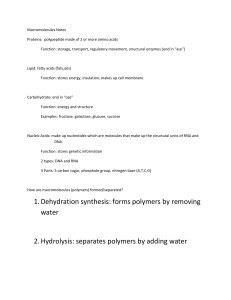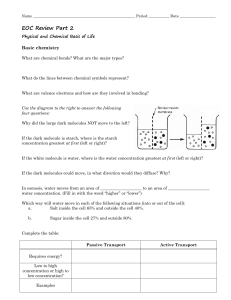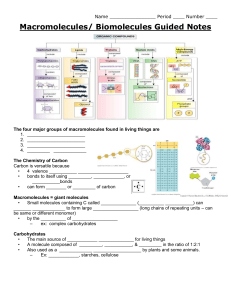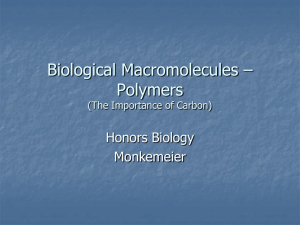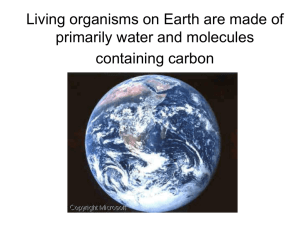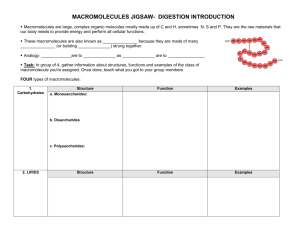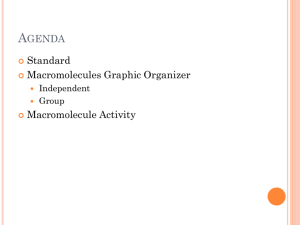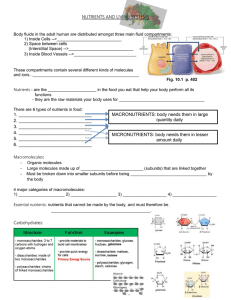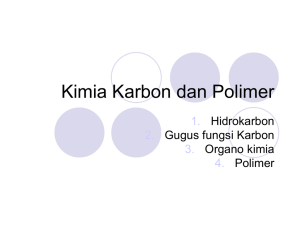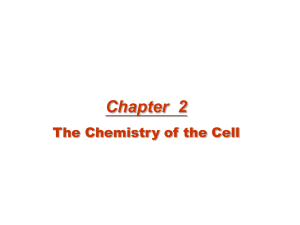Biological Macromolecules Molecules of Life
advertisement
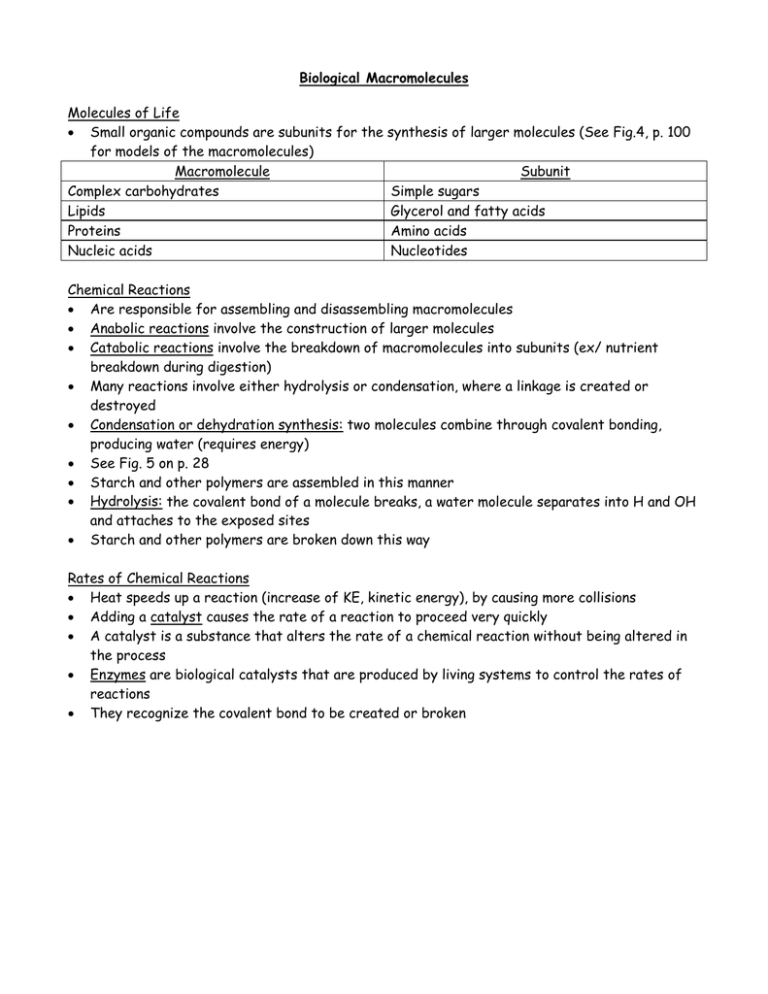
Biological Macromolecules Molecules of Life Small organic compounds are subunits for the synthesis of larger molecules (See Fig.4, p. 100 for models of the macromolecules) Macromolecule Subunit Complex carbohydrates Simple sugars Lipids Glycerol and fatty acids Proteins Amino acids Nucleic acids Nucleotides Chemical Reactions Are responsible for assembling and disassembling macromolecules Anabolic reactions involve the construction of larger molecules Catabolic reactions involve the breakdown of macromolecules into subunits (ex/ nutrient breakdown during digestion) Many reactions involve either hydrolysis or condensation, where a linkage is created or destroyed Condensation or dehydration synthesis: two molecules combine through covalent bonding, producing water (requires energy) See Fig. 5 on p. 28 Starch and other polymers are assembled in this manner Hydrolysis: the covalent bond of a molecule breaks, a water molecule separates into H and OH and attaches to the exposed sites Starch and other polymers are broken down this way Rates of Chemical Reactions Heat speeds up a reaction (increase of KE, kinetic energy), by causing more collisions Adding a catalyst causes the rate of a reaction to proceed very quickly A catalyst is a substance that alters the rate of a chemical reaction without being altered in the process Enzymes are biological catalysts that are produced by living systems to control the rates of reactions They recognize the covalent bond to be created or broken
